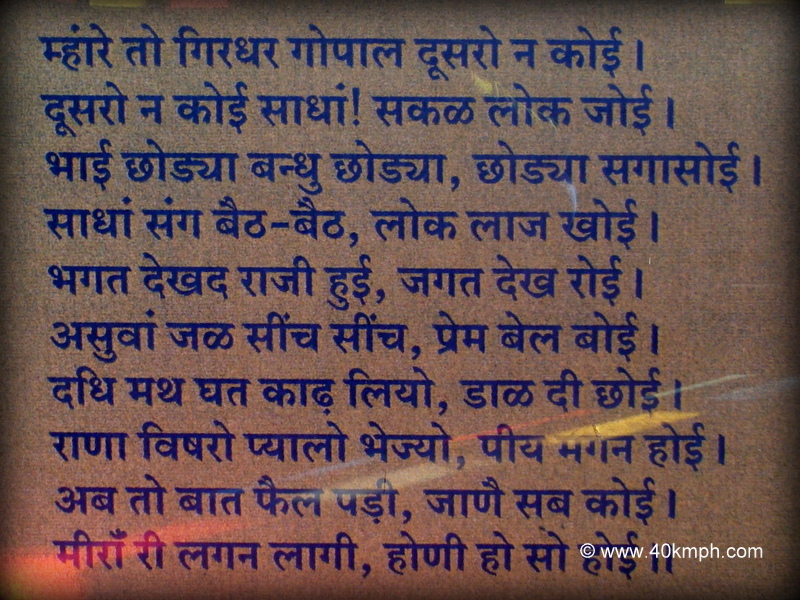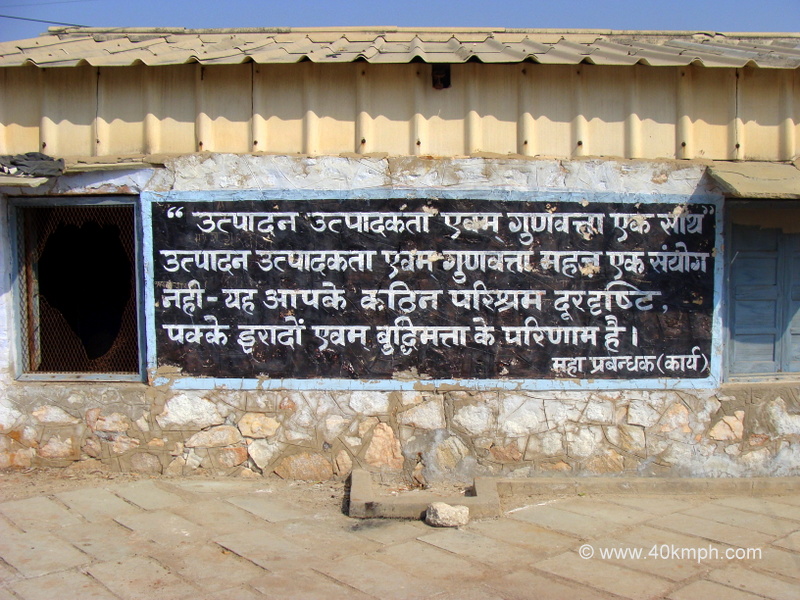Goddess temples – Savitri temple on top of Ratnagiri hill behind Brahma Temple and Paap Mochini Ekadashi Mata Temple on top of the little smaller hill behind Marwar Bus Depot are two places most of us wish to trek during the Pushkar tour.
The trekking desire was discussed with Krishna – a friend. Early morning hours we climbed to reach Paap Mochini Ekadashi Mata temple – a 30-minute trek.
The temple was just open, and early morning cleaning was going on. Jeetendar Parashar – The caretaker present.
Parashar is from Parashara Maharishi – They say. Am I correct?
Yes, you are – He said.
Upon query, he narrated History.
Do you know the story about Pushkar?
Yes, I know but if you narrate in short, I am happy to listen – said I.
‘Paap’ is sin and ‘Mochini’ is pardon as per Hindi English translation thus, Paap Mochini Ekadashi Mata is Goddess who relieves devotees from all his/her sin/s done during his/her lifetime.
As per Hinduism, there are three major Devtaas – Brahma, Vishnu, and Mahesh (Shiva). Vishnu’s place on earth is at Gaya (Bihar), Mahesh at Kashi (Banaras), Uttar Pradesh, and Brahma at Pushkar (Rajasthan).
Once Vishnu was sleeping a lotus flower sprouted from his navel and Brahma was self-born. Brahma cited Vishnu, Mahesh about their respective places on earth and worship by devotees but nothing for themselves. Vishnu was convinced and presented the lotus to Brahma and said: Throw it towards earth, wherever it is dropped you will have a place for yourself and devotees will worship you. Brahma did the same. The lotus dropped upon the earth and bounced at three places – one was named ‘Shrestha Pushkar’, the second as ‘Madhya Pushkar’, and the last one was ‘Kanishtha Pushkar’ also known as Buddha Pushkar.
About Buddha Pushkar there is another interesting history – said Jeetendar.
Mughal Emperor Aurangzeb was a cruel ruler who demolished many Hindu temples once reach Kanishtha Pushkar. While washing his face within the holy reservoir, Kanishtha Pushkar he saw his image as an old man and was afraid. Since then Kanishtha Pushkar was named as Buddha Pushkar.
‘Push’ is a flower, ‘Kar’ hands thus if both words merged it is Pushkar also known as Shrestha Pushkar. Pushkar Lake was formed the moment lotus dropped within the area. Shretha Pushkar or Pushkar is the place for Brahma since then. He meditated for 10,000 years at this holy place and organized Yagya (sacred fire). All devatas were invited to join including her wife Savitri through her son Narad. Narad to test how much his father gives importance to his mother suggested Savitri to arrive at the Yagya location a little late than the prescribed time. Everybody was present except Savitri. Auspicious time was running out Brahma was annoyed. Brahma requested his Dwarpal – Indra and Kuber to bring a suitable woman for the Yagya so that it is started.
Eight km from Pushkar is Naand Gaon popularly known as Nand Gaon (it is said and believed Nanda Saraswati flows underground). Indra and Kuber arrive at the Yagya location with a woman from Nand Gaon. Brahma sprinkles holy Pushkar lake water for the purity of the woman for Yagya named her ‘Vedmata Gayatri’ and married to complete Yagya.
About another woman’s presence with Brahma as a wife was heard by Gayatri she became furious and cursed Brahma and the entire devtaa present within the Yagya area. Indra, you will always face defeat in war, and Brahma, you will never be worshiped by anyone on planet earth.
This was terrifying, everybody was afraid but upon request by all devatas, she calm down and said – Only at Pushkar Brahma will be worshiped only by saints, not by family members and she left towards Ratnagiri hill where currently is Savitri temple which is about one hour trek.
Savitri rodra roop is of Kali present at Kali Ghat, Kolkata – said Jeetendar.
Now the question was for devatas how to get rid of the sin that is done by being present within the Yagya because as per Hindus marrying two wives is a sin and to be present with the same is also part of the sin. All devtaa started praying to God to remove them from the sin that was done unintentionally. At that time divine forecast was heard – opposite Savitri hill, Paap Mochini Ekadashi Mata will be present. Whoever visits Goddess will have respite from all types of sins and curses. Since then devotees visit Paap Mochini Ekadashi Mata to get rid of sin/s and curses.
It is also said Tretayug Ram was the incarnation of Vishnu and Hanuman of Lord Shiva. They both fought and killed Ravana – a Brahman. Killing Brahman as per Hindus is the worst sin. They also visited temples to get rid of sin.
Bhado Ekadashi (just before Krishna Janmashtami) there is a festival within the temple area. Kirtan is organized at night. Devotees from surrounding areas visit in large numbers for prayers and offerings.
Thank you Jeetendar – said I. It was indeed useful history. Thanks again & again.
And I inquire about the water well present nearby because usually on top of a hill, you won’t find a water well. It is built by forefathers to store rainwater for usage – said Jeetendar.
Brilliant idea and we towards the temple for prayer and donation.
Best Time To Visit
Savitri Temple – Sunrise
Paap Mochini Ekadashi Mata Temple – Sunset




